The History of Gaming
Over the years the industry of gaming has evolved into the
world of gaming we all know and use today. It all started back in the 1960’s as
we go back through the years and look at the advancements in new technology
that we have been accustomed to in recent years.
1960’s
This was the time before games consoles even existed never
mind available to the public, this was the time of the arcade machines. Despite
them not being located in your homes people would still spend their time and
money playing games on these machines, games that would end up becoming popular
on console later on.
The 1st
Generation
In 1972 the first games console, the Magnavox Odyssey
was created by Ralph H. Baer and was the first gaming system to be used in the
homes of the public, the Odyssey based upon a prototype being developed by Baer
in the 60’s known as the brown box. The console itself had a limitation as it only came with one game that
was already embedded into the system which was called ‘Pong’, Pong was a simple
bat and ball movement game and was controlled by two small dials that were
located on a controller that was connected to the console.
The 2nd Generation
Around the time of the late 70’s to
early 80’s the second generation consoles were on the market, these consoles
were also known as the ‘Golden Era’ because this is when cartridges were first
introduced for the systems. Now people can play more games than ever before
with all different genres of games on one system, the first console that was
programmable ROM cartridge-based was the Fairchild Channel F console created
back in 1976, although the console was limited in terms of graphics compared to it's competitors.
With the craze of a new film 'Star Wars' another arcade hit was born, Space Invaders was the first ever arcade game that recorded a players high score making the game highly addictive, arguably more addictive than many games that are released today. Space Invaders was also one of the reasons why the Atari 2600 console wasn't selling as well as it should have been at the time.
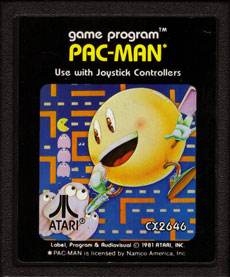 The Atari 2600 was the other
console released at the start of this generation, after getting beat in
competition with popular arcade games especially the likes of Space Invaders, Atari began to make the games for its own console to save the company but their arcade remakes were not as good as the original versions maybe due to the hardware limitations inside the console. After
problems within the company they forced out staff including the co-founder
Nolan Bushnell, four of Atari’s top games designers also left the company and formed
the first independent video game publisher named Activision which are still
hugely successful making popular games like the ‘Call of Duty’ Franchise and
also a certain two men named Steve Jobs and Steve Wozniak who both co-founded
Apple.
The Atari 2600 was the other
console released at the start of this generation, after getting beat in
competition with popular arcade games especially the likes of Space Invaders, Atari began to make the games for its own console to save the company but their arcade remakes were not as good as the original versions maybe due to the hardware limitations inside the console. After
problems within the company they forced out staff including the co-founder
Nolan Bushnell, four of Atari’s top games designers also left the company and formed
the first independent video game publisher named Activision which are still
hugely successful making popular games like the ‘Call of Duty’ Franchise and
also a certain two men named Steve Jobs and Steve Wozniak who both co-founded
Apple.The Atari 5200 was the second installment to the Atari franchise coming after the Atari 2600 which was the biggest selling console of the second generation; the 5200 was backwards compatible with the 2600 meaning that it could play the popular arcade title by Namco which was ‘Pac-Man’. Pac-Man was the first ever game where the character was the star of the game, which then changed the way companies wanted to create their games. Many people did complain about the controller for the Atari 5200 saying that the controller was so bad it overshadowed the console altogether.
The 3rd Generation
It wasn't just people leaving
Atari, an employee at Apple named Trip Hawkins left the company after he felt
he was not respected by Steve Jobs. Hawkins then went on to make his own
company ‘Electronic Arts’ which produce some of the most popular video game
even today, making the company the biggest and most successful independent
video game publisher ever.
The third generation was also known
as the 8-bit era as the consoles were starting to be built with 8-bit
processors. The third generation also saw the shift in dominance to the eastern
market because of the Japanese brand Nintendo who were new in the gaming
market after making a shift from being a card making company under the leadership of Hiroshi Yamauchi. The first console from Nintendo, the Nintendo Entertainment System
(NES) ‘first released in Japan as the Nintendo Family Computer in 1983’ The NES
was released to the rest or the world over two years later. There was a major restriction as the NES only had 64 colours in its palette.
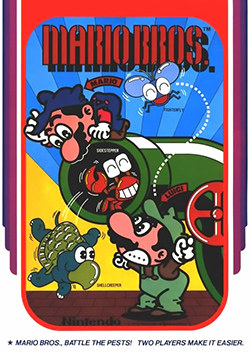 Nintendo also wanted to bring out their own arcade game that would also be used for their console to make the console more successful, so out came ‘Donkey Kong’
previously named Stubborn Gorilla the game was also created by Nintendo
themselves being released on an arcade machine in 1981, Donkey Kong was the
first game to have a story to the game which featured a character called
Jumpman a carpenter who has to run after the gorilla who has stolen the
carpenters girlfriend. With Donkey Kong being such a hit there were then plans
to release a game with Jumpman as the main character, the character’s name was
changed to Mario named after Nintendo’s landlord in
Nintendo also wanted to bring out their own arcade game that would also be used for their console to make the console more successful, so out came ‘Donkey Kong’
previously named Stubborn Gorilla the game was also created by Nintendo
themselves being released on an arcade machine in 1981, Donkey Kong was the
first game to have a story to the game which featured a character called
Jumpman a carpenter who has to run after the gorilla who has stolen the
carpenters girlfriend. With Donkey Kong being such a hit there were then plans
to release a game with Jumpman as the main character, the character’s name was
changed to Mario named after Nintendo’s landlord in
The 4th Generation
 With Atari discontinuing after
Nintendo’s dominance in the video game industry, Sega were Nintendo’s newest
rivals after they released the
With Atari discontinuing after
Nintendo’s dominance in the video game industry, Sega were Nintendo’s newest
rivals after they released the 
With Nintendo taking the world by storm and at the time having the best-selling console at the time with the Super Nintendo Entertainment System (SNES), they then released the first ever handheld console. The world was introduced to the Game Boy, this allowed gamers to use the portable device anywhere as it was battery powered and didn't need to be connected to a television because it had a 2.6 inch built in screen.
Later the same year that the Game
Boy was released, Atari joined in on the handheld craze going one better by
bringing out the Lynx which was the first handheld with a coloured LCD screen,
but again Atari were second best to Nintendo due to Atari’s handheld price
being off-putting and also having a short battery life. Despite that the Game Boy did also have limitations of it's own as the graphics weren't very good, also the picture was only in monochrome and the screen wasn't backlit which meant that people had to play in bright areas inside or in sunlight.
The 5th Generation
 With Nintendo still being the
number one ahead of Sega and with Atari failing after they attempted to come
back with the Atari Jaguar, could anyone really compete with Nintendo.
With Nintendo still being the
number one ahead of Sega and with Atari failing after they attempted to come
back with the Atari Jaguar, could anyone really compete with Nintendo.Nintendo's partnership with Philips resulted in a failure and they eventually brought out their next console in 1996 as they released the Nintendo 64, named for the console having a 64-bit processor the Nintendo 64. Whilst being praised about the graphics and the gameplay of the the console the system was criticized for the lack of games that were available for the system. Despite the Nintendo 64 getting a positive response before it's release it just couldn't compete with Sony and their PlayStation.
It had been 9 years since Nintendo
brought out their first handheld the Game Boy, it was now about time for them
to bring out a new one. Late 1998 Nintendo introduced the Game Boy Color which
would be the first handheld by Nintendo to be released with a coloured LCD
screen. Now gamers could play all of their favourite Nintendo games in a way
that have never before.
The 6th Generation
With Sega being one of Sony's competitors from the last generation they aimed to gain an advantage by releasing their console first making sure that they would be more successful with their own console after commercially failing with their Jaguar in the previous generation. When the Dreamcast was available to the public for the first time late 1998 and also released new creative games along with the system including the arcade hit Crazy Taxi, the console sold well upon release and continued to sell well until the release of the PlayStation 2 in 2000.

Now with Sony being the new number one it was about time the western market fought back and so Microsoft were the ‘new kid on the block’ and they created the XBOX in 2001, but could it compete with Sony and their second installment the PlayStation 2 which is still the best selling home console to date having sold 155 million units sold as of December 2012.
.jpg) With XBOX being supported well in
the financial area from their creators Microsoft (founded by Bill Gates), they were still unable to
really threaten the PlayStation’s dominance in the market, but XBOX did end up
acquiring a large fan base and support from third party licensing which meant
they were heading in the right direction, also releasing their first major
exclusive Halo. Created by Bungie (founded by Jason Jones and Alex Seropian, ‘Halo’ is one of the main reasons still why
some gamers pick the XBOX over the PlayStation. With gaming market still
growing this generation introduced the first consoles that were able to play
with other people online using broadband connection. Despite the breakthrough of online play via broadband connection some games were restricted for players as you were always required an internet connection to be able to play the game. Both the XBOX and PlayStation 2 used DVD disc drives which were a limitation compared to the PS3 which then introduced a blu-ray disc tray which then included more room on the discs for game data so that more features could be added to the games.
With XBOX being supported well in
the financial area from their creators Microsoft (founded by Bill Gates), they were still unable to
really threaten the PlayStation’s dominance in the market, but XBOX did end up
acquiring a large fan base and support from third party licensing which meant
they were heading in the right direction, also releasing their first major
exclusive Halo. Created by Bungie (founded by Jason Jones and Alex Seropian, ‘Halo’ is one of the main reasons still why
some gamers pick the XBOX over the PlayStation. With gaming market still
growing this generation introduced the first consoles that were able to play
with other people online using broadband connection. Despite the breakthrough of online play via broadband connection some games were restricted for players as you were always required an internet connection to be able to play the game. Both the XBOX and PlayStation 2 used DVD disc drives which were a limitation compared to the PS3 which then introduced a blu-ray disc tray which then included more room on the discs for game data so that more features could be added to the games.Nintendo also returned for the 6th generation by also releasing their newest console in 2001 named the GameCube, the GameCube was the first of Nintendo's consoles to be released using optical discs instead of ROM cartridges and was praised about the high quality of games that they released for the GameCube but was limited in terms of the consoles features, even though the console had limitations the GameCube sold really well like any other gaming system released by Nintendo.
The 7th Generation
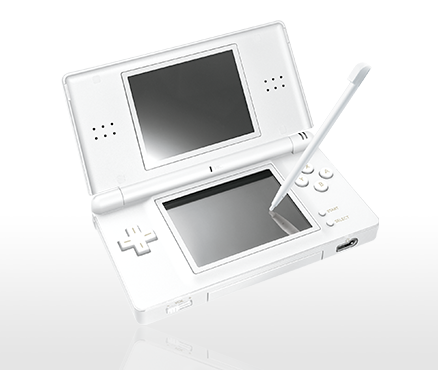 Since dominating the handheld consoles for the past 15 years releasing the Game Boy, Game Boy Color and also the Game Boy Advance, Nintendo kept on growing with new technology and innovations and along came the Nintendo DS in 2004 which was the first handheld to be released with a touchscreen as the device came with two LCD screens.
Since dominating the handheld consoles for the past 15 years releasing the Game Boy, Game Boy Color and also the Game Boy Advance, Nintendo kept on growing with new technology and innovations and along came the Nintendo DS in 2004 which was the first handheld to be released with a touchscreen as the device came with two LCD screens.
After successfully beating Nintendo in the games consoles market, Sony now decided to attempt to do the same also in the handheld market. In the same year as Nintendo released its DS, Sony released the PlayStation Portable also known as the PSP which was the first handheld to use optical discs and also had a much larger screen compared to other handhelds. The PSP was very successful but couldn't beat the DS in sales.
In this generation Nintendo really
made a big fight back against Sony and Microsoft when they brought out the Wii,
the Wii was the first ever console to be controlled by a motion sensor which
would respond to the movement of a wireless controller, this wasn't always a good thing as most of the console's games didn't give players a choice whether they wanted to play with the controller or use the motion technology. All of the consoles
this generation aimed more to have their controllers wireless as previous
consoles restricted people to be close to the console when playing as the
controller cable didn't stretch out that far.
The Wii sold the most out of the
other two consoles despite not having as many features as the XBOX 360 and
PlayStation 3 and also couldn't really support high-definition resolution
either like the other two. With the Wii featuring the motion technology it was
more popular with people that wouldn't usually play games consoles, so it could
include the whole family to play along.
The hardcore gamers still preferred
the XBOX 360 and PlayStation 3 to the Wii as they were still mainly consoles
that used a controller which meant that people could still play their favourite
games the original way as for some games the game play was different on the
Wii. The XBOX 360 included a Sky app which allowed people to watch live
television via their console. The console also had a party chat feature which
allowed people to talk to other people despite them not being in the same game,
features like these gave the XBOX 360 advantage over the other two. There was also limitations for the PlayStation 3 and the XBOX 360, a PS3 user would find that there would be an issue connecting with the PlayStation Network. The issue with the 360 was that it used DVDs for their games whereas the PS3 would use a blu-ray disc as it hold more bytes.
The 8th Generation
 Still to this day the handheld completion is still going strong and it’s still Nintendo and Sony fighting for the top spot and yet again releasing their latest handhelds in 2011. Nintendo this time went a step further by improving on their DS and converting it into a 3DS meaning it would be able to produce stereoscopic three-dimensional without the need of passive polarized glasses.
Still to this day the handheld completion is still going strong and it’s still Nintendo and Sony fighting for the top spot and yet again releasing their latest handhelds in 2011. Nintendo this time went a step further by improving on their DS and converting it into a 3DS meaning it would be able to produce stereoscopic three-dimensional without the need of passive polarized glasses. Since releasing the PSP in 2004 and the PSP Go in 2009 Sony have come a long way in the handheld market and now the latest device in late 2011 introducing the PlayStation Vita this device came with two analog sticks, an OLED touchscreen and also a touchpad located on the back of device, the handheld also supports Bluetooth, Wi-Fi and on certain models 3G. The Vita came with a lot of features even including backwards compatibility with previous PSP models, but Sony still couldn’t compete with Nintendo in the handheld market.
Since releasing the PSP in 2004 and the PSP Go in 2009 Sony have come a long way in the handheld market and now the latest device in late 2011 introducing the PlayStation Vita this device came with two analog sticks, an OLED touchscreen and also a touchpad located on the back of device, the handheld also supports Bluetooth, Wi-Fi and on certain models 3G. The Vita came with a lot of features even including backwards compatibility with previous PSP models, but Sony still couldn’t compete with Nintendo in the handheld market. Over recent years the handheld console has become less
popular since the development of the smartphone, companies like Apple and
Samsung are the two biggest selling smartphone developers. The versatility of
the Smartphone is one of the main reasons why less people buy handheld consoles
because not only does it act as the normal mobile phones used for calls and
texts the smartphone now can perform other functions like playing music, using
Over recent years the handheld console has become less
popular since the development of the smartphone, companies like Apple and
Samsung are the two biggest selling smartphone developers. The versatility of
the Smartphone is one of the main reasons why less people buy handheld consoles
because not only does it act as the normal mobile phones used for calls and
texts the smartphone now can perform other functions like playing music, using
Before the releases of the eighth
generation consoles it looked like the PlayStation would outshine its
competition once again, the PlayStation 4 has been named the “World’s most
powerful console” with it being the first console to include a DDR 5 RAM
whereas the other two consoles of this generation (XBOX One and Wii U) only
have a DDR 3 RAM include with the system hardware, not only did the Wii U have a limited RAM the console also has other hardware limitations as it only has a tri-core CPU. Despite the PlayStation 4 having a very successful console there is a problem with the controller for the system as the analog sticks rubber can end up peeling off which could end up having users to buy another controller every time this occurs.
The XBOX One tried to bring
out new features to be more successful than the PlayStation 4, one of the
features was the console would allow voice recognition where the system would respond
if the user has said a command that the console can carry out, this feature does have a problem as the console could respond to a command even if the user didn't mean to use the command. Another feature
is that gamers can ‘snap TV’ whilst playing a game meaning they can’t miss out
on a programme because of playing on their console.
The PlayStation 4
controller has a share button built into the device where a user can share a
screenshot or a clip of a game they’re playing and upload the media up onto a
social website.
The limitations at the moment for the consoles in this generation are that there is not many games as the consoles have not been on the market long, this is one of the reasons why people still haven't switched from the seventh generation consoles yet.
Other Advances
Gaming has not just evolved of the years for just console;
the industry has also progressed in the format of PC Based Games. Just like
video games the PC game journey began in the 1960’s and games at the time being
created for the PDP-1 were mainly text based PC games that carried out actions
when the user typed a keyword; these sort of games acted as puzzles that the
user had to figure out how to progress in the game. Spacewar was one of the
first PC games that wasn't a text based adventure game and actually featured
moving images whilst playing.
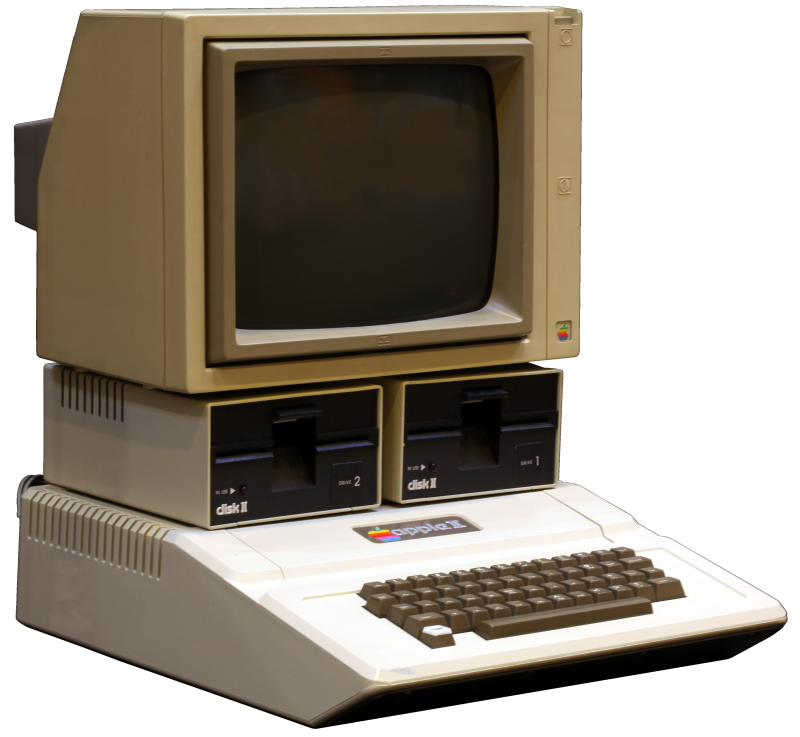
The PC industry didn't really start growing until the early 1980’s when Apple brought out their Apple 2 computer.
There was also the Commodore 64 these were two computers that were built to game as well as perform the basic functions like a regular PC.
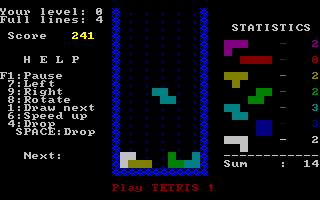 For the computer industry to really compete with the video
game industry, a game need to be created like some of the popular ones in the
past; easy to play and also addicting. In 1984 Alexey Pajitnov came up with the
puzzle game Tetris and in 1988 Tetris started to become known more worldwide
showing up on computer in
For the computer industry to really compete with the video
game industry, a game need to be created like some of the popular ones in the
past; easy to play and also addicting. In 1984 Alexey Pajitnov came up with the
puzzle game Tetris and in 1988 Tetris started to become known more worldwide
showing up on computer in  In 1992 a game based on the original Castle Wolfenstein was
created and named Wolfenstein 3D, this was a major breakthrough in gaming as it
was one of the first game to be played in the first person perspective which
made a gateway for other games to be created like Doom made by the same
creators (id Software) as Wolfenstein 3D. Doom was a big hit considering it help popularize
multiplayer gaming, this was done by a connection on a network.
In 1992 a game based on the original Castle Wolfenstein was
created and named Wolfenstein 3D, this was a major breakthrough in gaming as it
was one of the first game to be played in the first person perspective which
made a gateway for other games to be created like Doom made by the same
creators (id Software) as Wolfenstein 3D. Doom was a big hit considering it help popularize
multiplayer gaming, this was done by a connection on a network.
In 1993 Rand and Robyn Miller created a computer game that
was the first game ever to be released in the CD format beating the competitors
in the games console industry. The game was called Myst which was an
interactive adventure game, because the game sold so well it started off a
series of Myst games and has become one of the most popular computer games in
history.
In the year of 2000 the world was introduced to a cool new video
game, The Sims was born. Based on the game Sim City; The Sims was a game with a
virtual world where you can create your own character and run the way they live
whatever way you wanted to.
When the internet was first introduce in the 1990’s people
started to begin playing PC games online, one of the first major games was again by id Software, the creators of Wolfenstein and Doom which was called Quake. Internet gaming
began a craze for gamers where they would create teams with their friend or
people they have met online and call themselves a clan and now would normally
compete with other clans in competitions. This craze pretty much kicked off a
revolution in the gaming industry with more game producers creating games that
can be played by a vast amount of people online and has also found its way to
the console platforms.
Over recent years people have created gaming expos like E3 where hardcore gamers can pay to come along, these expos can feature conferences where developers can show off their latest games and technologies and also areas where the gamers can also test out the latest games before their even released.
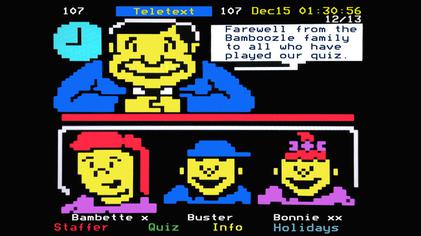 Before December 2009 everyone's television in the UK was analogue and people would be able to use a service program called Teletext which came had some games that were able to be played with your TV remote, one of the games was Bamboozle which was a quiz game and was similar to television program Who Wants To Be A Millionaire? due to the game having a multiple choice format.
Before December 2009 everyone's television in the UK was analogue and people would be able to use a service program called Teletext which came had some games that were able to be played with your TV remote, one of the games was Bamboozle which was a quiz game and was similar to television program Who Wants To Be A Millionaire? due to the game having a multiple choice format. 
More often today you can play games on many different platforms one of the other ways is the use of interactive TV. Interactive TV based games are either installed into your TV or into a box that you may connect to your TV to get more channels; these games feature some of the most simplistic games and can be played with your TV remote.
As we look back at how much gaming has evolved since the
1960’s, what else could the industry come up with next...
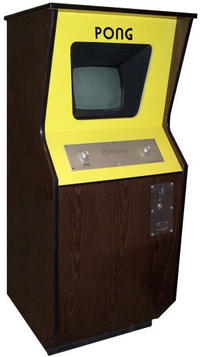







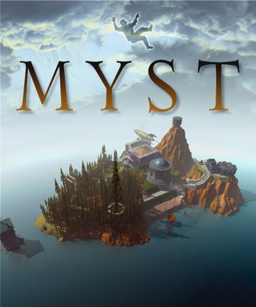


No comments:
Post a Comment